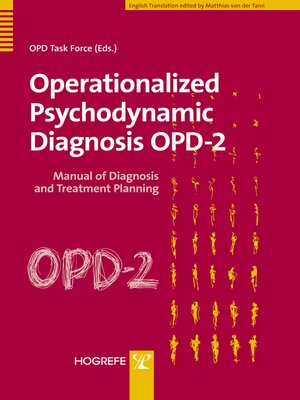Operationalized Psychodynamic Diagnosis OPD-2
ebook ∣ Manual of Diagnosis and Treatment Planning
By OPD Task Force

Sign up to save your library
With an OverDrive account, you can save your favorite libraries for at-a-glance information about availability. Find out more about OverDrive accounts.
Find this title in Libby, the library reading app by OverDrive.



Search for a digital library with this title
Title found at these libraries:
| Library Name | Distance |
|---|---|
| Loading... |
Operationalized Psychodynamic Diagnosis (OPD) is a form of multiaxial diagnostic and classification system based on psychodynamic principles, analogous to those based on other principles such as DSM-IV and ICD-10. The OPD is based on five axes: I = experience of illness and prerequisites for treatment, II = interpersonal relations, III = conflict, IV = structure, and V = mental and psychosomatic disorders (in line with Chapter V (F) of the ICD-10). After an initial interview lasting 1–2 hours, the clinician (or researcher) can evaluate the patient's psychodynamics according to these axes and enter them in the checklists and evaluation forms provided. The new version, OPD-2, has been developed from a purely diagnostic system to include a set of tools and procedures for treatment planning and for measuring change, as well as for determining the appropriate main focuses of treatment and developing appropriate treatment strategies.







